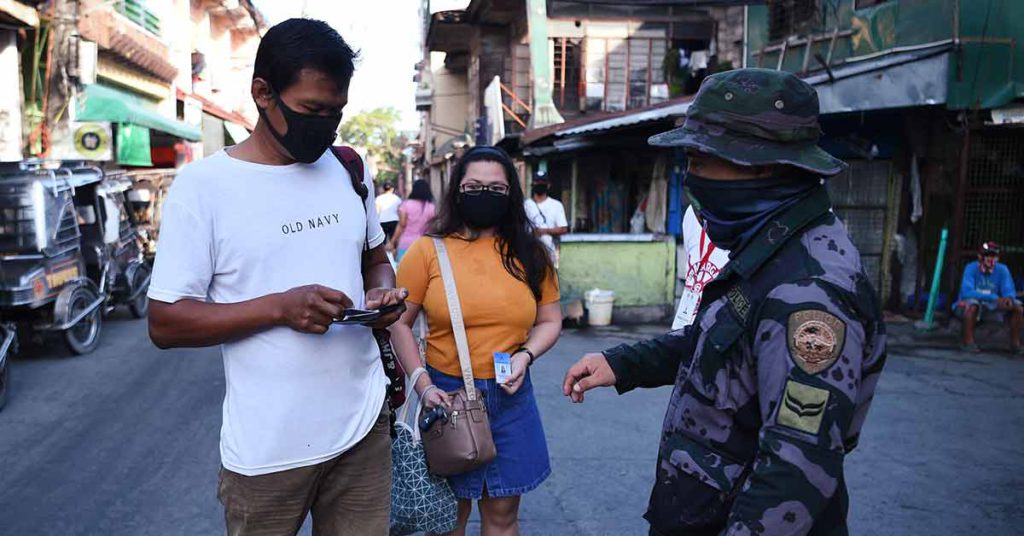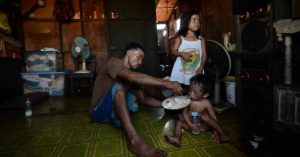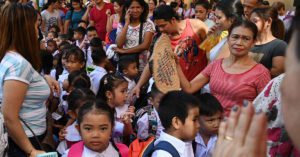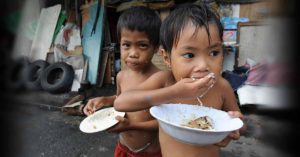
As the Philippines braces for the gradual reopening of its economy, the Inter-agency Task Force on Emerging Infectious Diseases (IATF-EID) on 2 July, 2020 approved the National Task Force (NTF) against COVID-19 Phase II Action Plan. The NAP (National Action Plan) Phase II according to Carlito Galvez Jr, Chief Implementer of the NTF against COVID-19 seeks to create a balance between breathing life into the nation’s economy and at the same time protecting the health and welfare of Filipinos against the deadly virus. It aims to rehabilitate the Philippine economy while ensuring that the health system of the country will be able to cope up with spikes in the number of cases as the economy reopens.
Secretary Galvez also further reiterated that the said plan is multi-pronged with the following salient features and objectives: (a) to contain and manage new COVID-19 cases in high-risk areas; (b) to sustain the wins against COVID-19 and continue best practices; (c) to balance the nation’s health and economic welfare; (d) to localise COVID-19 responses by rallying peoples’ support and participation; (e) to keep a low fatality rate including non-coronavirus cases; (f) to institutionalise the “Prevent-Detect-Isolate-Treatment-Reintegration Strategy (PDITR),” and the “Zoning Containment Strategy”; and (g) to focus and concentrate efforts on expanded and targeted testing and contact tracing.
The NAP’s Phase II is being led by local government units (LGUs) with strong support from the national government. LGUs are the frontrunners in the management of the pandemic response and the localised implementation of health protocols including the application of localised lockdowns based on the zoning concepts developed by medical professionals and epidemiologists within their areas of jurisdiction to control the COVID-19 contagion in the community. Hence, the overarching policy goals of the Philippine government now are not just one but two: to save lives and to ensure an economic and social recovery that can thrive in the post-pandemic era.
Current Developments
In as far as the implementation of the NAP’s Phase II is concerned, it is thus far gaining traction as the LGUs together with the national government are ramping-up their COVID-19 responses on testing and contact tracing, while the national government and the private sector continuously build partnerships in establishing more testing laboratories nationwide. On this note, it’s imperative to take a look at the operationalisation of NAP Phase II at the community level.
Anti-COVID-19 Czars
In the interest of a more focused, faster, effective, efficient, and more intensified implementation of NAP’s Phase II, the IATF has designated four anti-COVID-19 czars for each of the four major prioritised strategies of the NAP – testing, tracing, isolation, and treatment. Each anti-COVID-19 czar is assigned to lead one of the components. The four anti-COVID-19 czars are (1) Secretary Vivencio “Vince” Dizon as Chief Testing Czar; (2) Baguio City Mayor Benjamin Magalong as Chief Tracing Czar; (3) Public Works and Highways Secretary Mark Villar as Chief Isolation Czar; and (4) Health Undersecretary Leopoldo “Bong” Vega as Chief Treatment Czar.
The chief testing czar is responsible for scaling up the testing capacity of the country, while the chief isolation (facility) czar leads the government’s efforts in scaling-up the building/creation of isolation and quarantine facilities. The nation’s chief tracing czar leads the development of a contact tracing ecosystem that comprises a troupe of interviewers, analysts, encoders, and technical support personnel. The country’s treatment czar’s mission is to scale-up and expand the bed capacity of hospitals for COVID-19 patients, increase the health care personnel of public and private hospitals, and augment the medical supply needs of health facilities across the country.

Targeted Expanded Testing
Under NAP’s Phase II, the “targeted expanded testing” of the government will not be limited to symptomatic and front liners only, but also the asymptomatic from other sectors and industries, including employees of government agencies who are serving as front liners. This newly improved testing strategy balances the health and economic activities and institutionalises further the “prevent-detect-isolate-treat-reintegrate strategy”, and the “zoning containment strategy” of the government. This initiative fully uses the 10 million tests procured by the Department of Budget and Management (DBM) and the Department of Health (DOH).
In terms of testing, as of 23 July, there are 91 COVID-19 laboratories of which 68 are licensed reverse transcription polymerase chain reaction (RT-PCR) and 23 are licensed GeneXpert laboratories nationwide, while total tests done is more than a million already (1,182,343 total individuals tested), with daily actual tests of around 25,325 (DOH). This data essentially signifies that the target of 30,000 actual daily tests is achievable by the end of July.
The LGUs are also ramping-up their community testing capacities through the establishment of mega swabbing facilities and drive-thru testing centres. For example, in Metro Manila, the first free “walk-in” COVID-19 testing centre is at the “Ospital ng Sampaloc”, and drive-thru testing centres are available in Manila and Taguig. These developments are indeed huge improvements to the Philippines’ “targeted expanded testing program,” especially in restoring business confidence as the economy reopens.
Contact Tracing (CT)
The chief Contact Tracing (CT) czar has pioneered some innovations and improvements in the CT program of the country. He has introduced the use of a “Contact Tracing E-System”, which has three major components: (a) a “Geographical Information System” (GIS) platform to visualise the existence of potential infection in different areas and to visualise COVID-19 data in many ways that reveal relationships, patterns, trends, and possible spread of infections; (b) an “Analytical – Link Analysis Tool,” which shows different views on how an infected patient could infect others by tracking their daily activities, showing possible gaps and creating more opportunities to track down close contacts of patients using a timeline; and (c) a COVID-19 “Data Collection Tool.”
The CT structure has been revolutionised as well by including not only the interviewees, health workers, and investigators, but also analysts, encoders, technical support, and community support teams or the Barangay Health Emergency Response Teams (BHERTs) as members of the CT team. The skills training for contact tracers has been intensified as well and has been given a lot of attention and focus by the chief CT czar.
To date, a total of 69,000 contact tracers have been deployed and assigned to 5,215 contact tracing teams nationwide who are now actively helping communities in monitoring both, asymptomatic and symptomatic COVID-19 patients (DILG). The DILG is also waiting for approval from the DBM to hire an additional 50,000 contact tracers to further boost the CT efforts of the government. On 21 July, the DILG tasked 42,045 barangays nationwide to form their contact tracing teams to further intensify CT efforts. Likewise, the Philippine National Police (PNP) has also committed to deploying 700 contact tracers who will work within the National Capital Region (NCR).
The CT thus far was the weakest link in the overall national response against COVID-19 in the last three to four months. But given these new encouraging developments, it seems that is not the case anymore. The appointment of a chief tracing czar, gradient hiring/deployment of more trained contact tracers, and the formation of more contact tracing teams at the barangay level, signifies an improved CT program.
Isolation
To date, there are 52,223 available isolation beds in “Ligtas COVID Centers” (local isolation facilities), while there are 3,193 isolation beds at “We Heal As One Mega Ligtas Centers.” The Department of Public Works and Highways (DPWH) has a total of 150 quarantine facilities nationwide, 111 of which are currently being constructed. It has also identified 381 possible locations for offsite dormitories and isolation facilities.
For example, it constructed an off-site dormitory for medical personnel in Cebu City. It is currently constructing dormitories for medical front liners in Ormoc City, and building two dormitory facilities for medical personnel in Lapu-Lapu City. Also, the DPWH has just completed the off-site dormitory facility within the compound of the Lung Center of the Philippines for medical front liners.
The DPWH is also converting some 168 evacuation facilities into COVID-19 isolation centres, where 68 are already completed. But given the increasing utilisation rate of treatment/isolation and quarantine facilities in the country, the DPWH in coordination with the DOH has planned to build another 50 COVID-19 quarantine facilities in the coming weeks.
Likewise, the government will also construct some facilities to increase the ICU beds capacity of the country. The ramping-up in the construction of isolation/quarantine facilities is another critical development amid the still increasing rate of infection in the country.
Treatment
The “One Hospital Command” has been launched with three major objectives. First to harmonise the response of the public and private health institutions to critically-ill COVID-19 patients. Second, to formulate bed allocation guidelines and expand the health capacity of hospitals in the country. And third, to carry out a proper referral system or so-called “public and private referral system” to avoid overwhelming hospitals.
According to Dr Vega, the treatment czar, his team is trying to collaborate with the different health facilities so they can work as a network with a system, rather than work independently with one another, and move as one. The “One Hospital Command” is an indispensable development especially now that the utilisation rate of hospital beds is increasing particularly in the NCR due to the spike in the number of positive cases in the country.
Conclusion
The Philippines has what it takes to successfully defeat the deadly pandemic. For one, the state’s capacity which refers to competent state apparatus though far from perfect is functional and working. There’s decisive leadership on the part of the government which is very critical when it comes to well-informed and time-sensitive decision-making.
Likewise, the current government’s political legitimacy, which means citizens’ trust is thus far unwavering as evidenced by the 94.03 percent trust rating of President Duterte, which means nine out of 10 Filipinos have high trust in the president and the government amid the pandemic according to the EON Group and research firm, Tangere. To note, cooperation and observance of government protocols/directives during a pandemic is anchored on public trust.
However, the missing link that will be the deciding factor in the fight against COVID-19 is the self-discipline, sense of responsibility, and utmost commitment in following quarantine protocols on the part of all Filipinos. There are still members of the community that continuously violate quarantine rules with no regard for the safety of others. For instance, staging rallies and protest gatherings during the pandemic.
Such activities are not beneficial at all especially if social/physical distancing and the wearing of face masks are not followed strictly; quickly becoming breeding grounds for the rapid spread and transmission of the deadly virus. It’s not about constraining the right to assembly, rather it’s more an issue of due diligence and appropriateness of protest actions amid a pandemic as contagious and deadly as the novel coronavirus.
Truth be told, the successful implementation of NAP Phase II is very much dependent not just on the national government and LGUs, but much more on everyone’s compliance of the minimum health standards and quarantine protocols. Most importantly, the unity and cooperation of all Filipinos regardless of political colour and association is critical.
Source: The ASEAN Post
https://theaseanpost.com/article/philippines-enters-phase-ii-virus-action-plan



